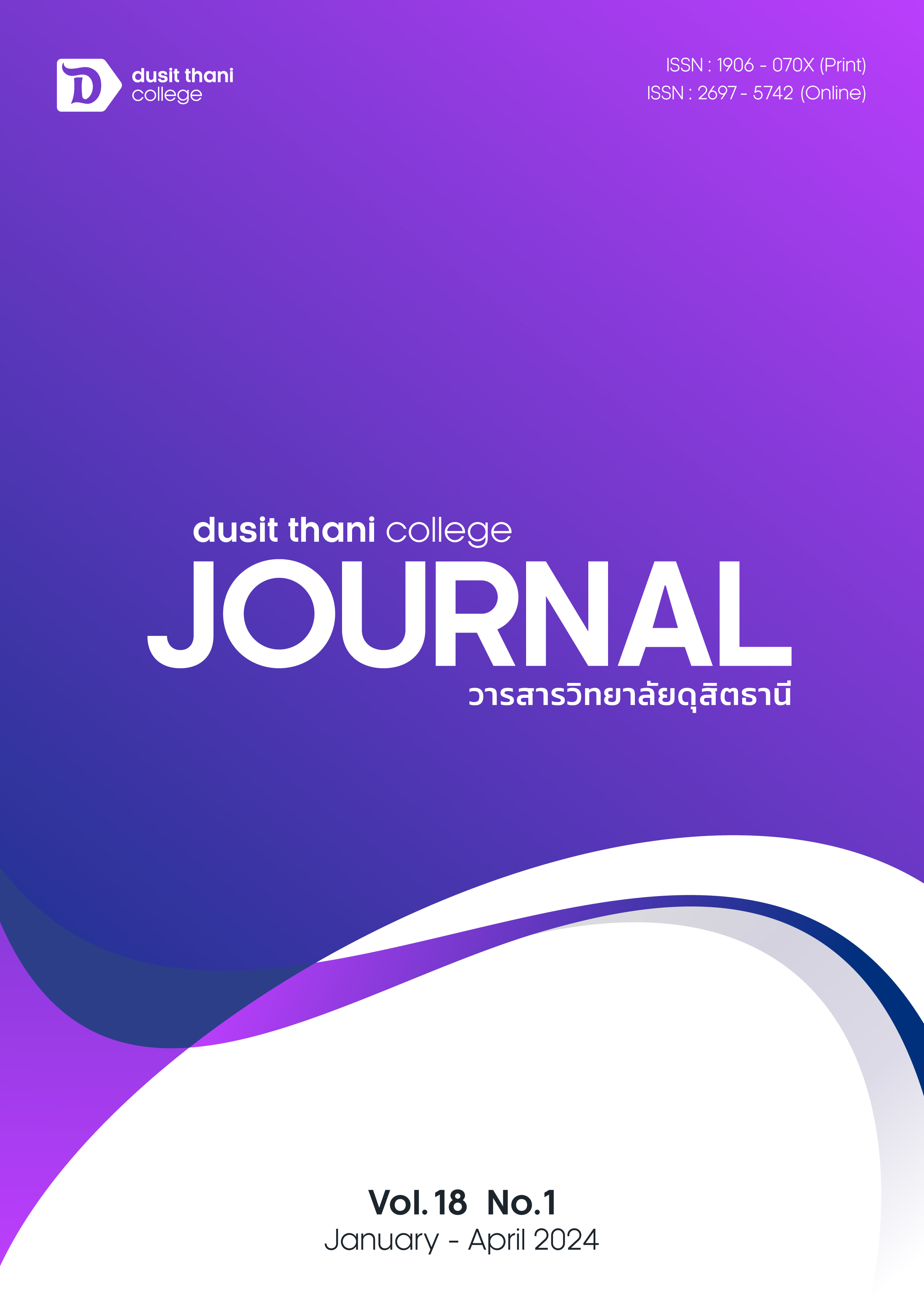การวิเคราะห์ปัจจัยเชิงยืนยันของประสิทธิภาพสิ่งอำนวยความสะดวกด้านการฝึกซ้อมกีฬาของศูนย์ฝึกกีฬาแห่งชาติ สนามกีฬาสมโภชจังหวัดเชียงใหม่ 700 ปี
Main Article Content
บทคัดย่อ
งานวิจัยเชิงปริมาณนี้มีวัตถุประสงค์เพื่อวิเคราะห์ปัจจัยเชิงยืนยันของประสิทธิภาพสิ่งอำนวยความสะดวกด้านการฝึกซ้อมกีฬาของศูนย์ฝึกกีฬาแห่งชาติสนามกีฬาสมโภชจังหวัดเชียงใหม่ 700 ปี กลุ่มตัวอย่างคือผู้ให้บริการและผู้ใช้บริการ รวม 672 คน ปัจจัยที่นำเสนอคือ 9 ปัจจัยตามเสาหลักที่ 6 ของนโยบายปัจจัยกีฬาที่นำทางสู่ความสำเร็จการกีฬาระดับนานาชาติ เครื่องมือที่ใช้คือ แบบสอบถามแบบออนไลน์ซึ่งมีความตรงและความเที่ยงในระดับที่ยอมรับได้จากค่าเฉลี่ยของดัชนีความสอดคล้องเชิงเนื้อหารายข้อ และค่าครอนบาคอัลฟ่า เท่ากับ 0.93 และ 0.88 ตามลำดับ เทคนิคการวิเคราะห์ปัจจัยเชิงยืนยันถูกนำมาใช้ในการวิเคราะห์ทางสถิติผลการวิจัยพบว่า 9 ปัจจัยของประสิทธิภาพสิ่งอำนวยความสะดวกด้านการฝึกซ้อมกีฬาของศูนย์ฝึกกีฬาแห่งชาติสนามกีฬาสมโภชจังหวัดเชียงใหม่ 700 ปี มีความสอดคล้องกับข้อมูลเชิงประจักษ์ (ดัชนีวัดระดับความสอดคล้องเปรียบเทียบ เท่ากับ 0.989) ค่าน้ำหนักองค์ประกอบมาตรฐานสูงสุด 3 ลำดับ ได้แก่ ข้อมูลความต้องการ เครือข่ายสิ่งอำนวยความสะดวกคุณภาพสูง และข้อมูลการเดินทาง ผู้บริหารของศูนย์ฝึกกีฬาแห่งชาติสนามกีฬาสมโภชจังหวัดเชียงใหม่ 700 ปี สามารถพิจารณาให้ความสำคัญกับข้อมูลความต้องการสำหรับการกำหนดกลยุทธ์การจัดการไปสู่การเพิ่มประสิทธิภาพได้อย่างเหมาะสม
Article Details

This work is licensed under a Creative Commons Attribution-NonCommercial-NoDerivatives 4.0 International License.
นโยบายการพิจารณากลั่นกรองบทความ
- บทความวิจัยและบทความวิชาการทุกเรื่องที่จะได้รับการตีพิมพ์ต้องผ่านการพิจารณากลั่นกรองโดยผู้ทรงคุณวุฒิ (Peer Review) ในสาขาที่เกี่ยวข้อง จำนวน 3 ท่าน/บทความ
- บทความ ข้อความ ภาพประกอบและตารางประกอบที่ลงตีพิมพ์ในวารสารเป็นความคิดเห็นส่วนตัวของผู้เขียน กองบรรณาธิการไม่จำเป็นต้องเห็นด้วยเสมอไป และไม่มีส่วนรับผิดชอบใด ๆ ถือเป็นความรับผิดชอบของผู้เขียนแต่เพียงผู้เดียว
- บทความที่จะได้รับการตีพิมพ์จะต้องไม่เคยตีพิมพ์ เผยแพร่ที่ใดมาก่อน และไม่อยู่ระหว่างการพิจารณาของวารสารฉบับอื่น หากตรวจสอบพบว่ามีการตีพิมพ์ซ้ำซ้อน ถือเป็นความรับผิดชอบของผู้เขียนแต่เพียงผู้เดียว
- บทความใดที่ผู้อ่านเห็นว่าได้มีการลอกเลียนหรือแอบอ้างโดยปราศจากการอ้างอิง หรือทำให้เข้าใจผิดว่าเป็นผลงานของผู้เขียน กรุณาแจ้งให้กองบรรณาธิการวารสารทราบจะเป็นพระคุณยิ่ง
References
Ayre, C., and Scally, A. J. (2014). Critical values for Lawshe’s content validity ratio: Revisiting the original methods of calculation. Measurement and Evaluation in Counseling and Development, 47(1), 79-86. Retrieved from https://doi.org/10.1177/0748175613513808
Chankuna, D., Chanthonsarasom, A., and Sriboon, N. (2021). Perception of sports training facilities efficiency and guideline for developing national sports training center of Sports Authority of Thailand. Journal of Sports Science and Technology, 21(2), 125-140. Retrieved from https://doi.org/10.14456/jsst.2021.16
Charnnarong, P., Sawangmek, T., Roonprapunta, K., and TiaotrakulSports, A. (2022). Facility management model for Rajabhat Universities. Dhammathas Aeademic Journal, 22(4), 241-255. Retrieved from https://so06.tci-thaijo.org/index.php/dhammathas/article/view/256228/175131
Chupthaisong, J., and Toudta, T. (2021). Development process of sports administration in sports center, Bangkok. The Journal of Law, Public Administration and Social Science, School of Law Chiang Rai Rajabhat University, 5(1), 195-212. Retrieved from https://so06.tci-thaijo.org/index.php/lawcrru/article/view/244758/167540
De Bosscher, V., De Knop, P., van Bottenburg, M., and Shibli, S. A. (2006). A conceptual framework for analysing sports policy factors leading to international sporting success. European Sport Management Quarterly, 6(2), 185-215. Retrieved from https://doi.org/10.1080/16184740600955087
De Bosscher, V., Shibli, S., Westerbeek, H., and van Bottenburg, M. (2015). Successful elite sport policies. An international comparison of the Sports Policy factors Leading to International Sporting Success (SPLISS 2.0) in 15 nations. Aachen: Meyer and Meyer.
Deengam, S., and Nimakorn, C. (2019). Marketing model for the worthy use of the stadium. Journal of MCU Social Science Review, 8(4),201-211. Retrieved from https://so03.tci-thaijo.org/ index.php/jssr/article/view/210317/161261
Hair, J. F., Sarstedt, M., Ringle, C. M., and Mena, J. A. (2012). An assessment of the use of partial least squares structural equation modeling in marketing research. Journal of the Academy of Marketing Science, 40(3), 414-433. Retrieved from https://doi.org/10.1007/s11747-011-0261-6
Hu, L.-t., and Bentler, P. M. (1999). Cutoff criteria for fit indices in covariance structure analysis: conventional criteria versus new alternatives. Structural Equation Modeling, 6(3), 1-55. Retrieved from https://doi.org/10.1080/10705519909540118
Preuss, H., and Hong, S. P. (2021). Olympic legacy: Status of research. Journal of Global Sport Management, 6(3), 205-211. Retrieved from https://doi.org/10.1080/24704067.2021.1888028
Sanguansap, S., and Pookaiyaudom, G. (2023). Expectations and satisfactions of Bangkok basketball court users towards sport facilities provided at basketball court. Journal of Sperts Science and Health, 24(2), 166-179. Retrieved from https://he02.tci-thaijo.org/index.php/spsc_journal/article/view/263765/181329
Sports Authority of Thailand. (2020). Annual report 2020 Sports Authority of Thailand Ministry of Tourism and Sports. Bangkok. Retrieved from https://shorturl.at/iJOPX
Sports Authority of Thailand. (2021). SAT and Chiang Mai Provincial Administrative Organization prepare to use Chiang Mai 700th Anniversary Stadium as the sports development center (NTC) of the northern region. Retrieved from https://shorturl.at/dsKP1
Taber, K. S. (2018). The use of Cronbach’s alpha when developing and reporting research instruments in science education. Research in Science Education, 48, 1273-1296. Retrieved from https://doi.org/10.1007/s11165-016-9602-2
Tongsook, U., and Gulthawatvichai, T. (2019). Assessing the influence of sports facility on customer satisfaction at Chulalongkorn University Sports Center. Journal of Sports Science and Health, 20(1), 58-72. Retrieved from https://he02.tci-thaijo.org/index.php/spsc_journal/article/view/240139/163664

